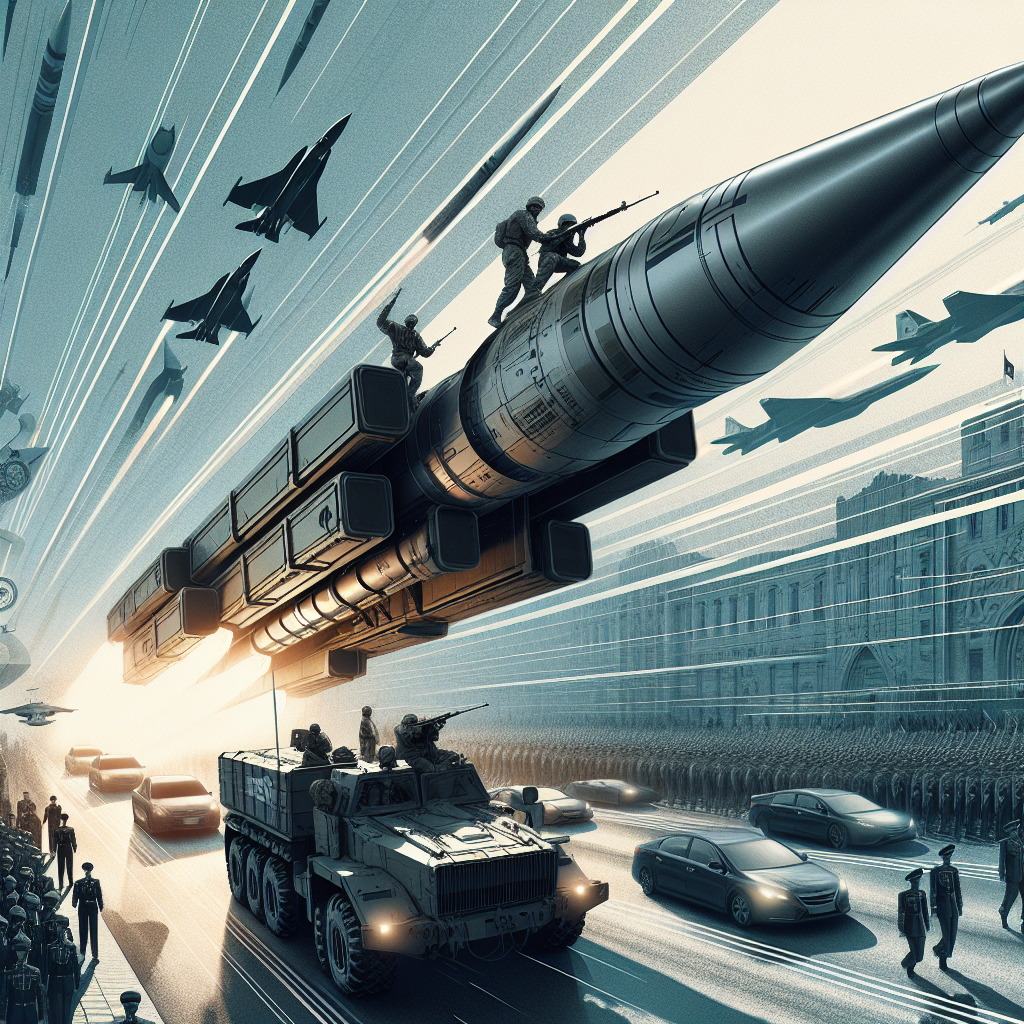The United States Army recently deployed the Typhon medium-range missile system to Japan as the Chinese Communist authorities carried out a military parade to showcase their military strength under the pretext of commemorating the victory in World War II.
On September 15, the Typhon missile system, also known as “Typhon,” made its official debut at the Marine Corps Air Station Iwakuni located on the southwest tip of Honshu Island in Japan.
This deployment of the Typhon missile system is part of this year’s “Resolute Dragon” joint military exercise between the United States and Japan. This unprecedented military exercise involves around 19,000 American and Japanese troops and will continue until September 25.
The Typhon system is a vehicle-mounted weapon system designed to bridge the gap in the Army’s capabilities between precision strike missiles and long-range hypersonic systems. The system can launch Tomahawk cruise missiles and SM-6 multi-purpose missiles.
The Tomahawk missile can accurately strike targets on land or at sea up to 1,000 miles away. In addition to acquiring Tomahawk missiles, Japan has also been producing its own long-range missiles as part of its latest round of military capability upgrades.
The SM-6, originally an air defense missile, has been modified to be able to target both maritime and land-based threats through the Typhon system, essentially giving it the functionality of a short-range ballistic missile.
Colonel Wade Germann, the commander of the 3rd Multi-Domain Task Force responsible for operating the Typhon system, stated during a television event at the Iwakuni base, “By utilizing various systems and different types of ammunition, this system can successfully deter enemy forces.”
Another key feature of the system is its ability to be rapidly deployed to the front lines in times of crisis. The launchers of the Typhon missiles can be transported by the US Air Force’s C-17 heavy transport aircraft, known for its ability to take off and land on short runways or rugged mountain roads, indicating its capability to reach more challenging locations.
Germann emphasized, “With teamwork, this system can be deployed remotely through maritime and aerial vehicles.”
The Typhon system has become a highlight of the US military’s operations in the Indo-Pacific region. In July of this year, the US Army deployed a launcher to Australia and successfully used an SM-6 missile to sink a target at sea, marking the first practical application of the system outside of the US mainland.
With tensions escalating in the South China Sea, the system has also been deployed to the Philippines at Manila’s request.
Germann mentioned that the Typhon missile system stationed at the Iwakuni base will be withdrawn from Japan after the “Resolute Dragon” exercise, but he did not disclose the subsequent deployment location of the system.
In response to the temporary deployment of the Typhon missile system by the US military in Japan, Chinese officials claimed on September 16 that this move is inciting military conflicts in the region for the US and Japan.
Just days before the deployment of the Typhon missile system at the Iwakuni base, the Japanese Ministry of Defense reported that the latest Chinese aircraft carrier, the “Fujian,” was stationed in the waters north of the Senkaku Islands (known as the Diaoyu Islands in China) in the East China Sea. Currently, Japan, China, and Taiwan all assert sovereignty over these uninhabited islands and rocks.
This deployment of the Typhon missile system coincides with China’s “grand military parade.” On September 3, in the name of commemorating the 80th anniversary of victory in World War II, China showcased its military strength with thousands of officers and advanced weapons parading through Tiananmen Square. This display is seen as a means for China to incite nationalist sentiments amidst economic pressures and escalating geopolitical tensions.
In such commemorative events, the contributions of the Nationalist government led by Chiang Kai-shek are largely excluded by the Chinese Communist Party. Although the Nationalist government was a key player in resisting Japanese aggression, it lost in the subsequent Chinese Civil War and was forced to retreat to Taiwan in 1949.
Despite its limited role in the war against Japan, the Chinese Communist Party has consistently claimed to be the main force resisting Japanese invasion.
During World War II, the United States played a critical role in facilitating Japan’s eventual surrender. However, at the Chinese Communist Party’s military parade, similar recognition of the crucial contributions made by the US is notably lacking. This deliberate omission further deepens former US President Trump’s skepticism towards the Chinese Communist Party.
President Trump once wrote on the “Truth Social” platform: “Many Americans sacrificed in the pursuit of victory and glory in China, may their bravery and sacrifices receive the respect and recognition they deserve!”

